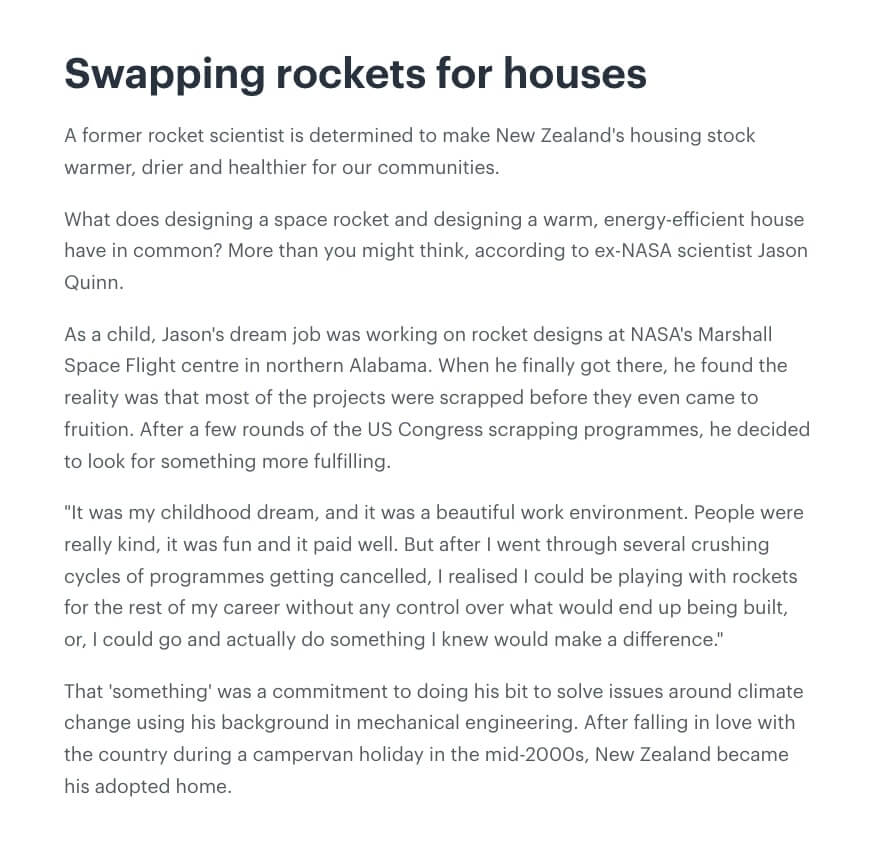I’ve had clients call me with issues but then tell me, “the salesperson said it met Building Code”, as if that means something. All it means is the developer wasn’t allowed to build it any worse. This quote from the latest BRANZ Guideline newsletter (Feb 2021) comes with emphasis added by me: “The Building Code is not a quality mark …
Mechanical ventilation everywhere: not just high-performance buildings
Well-built high-performance buildings need mechanical ventilation. Times have changed, nobody’s really arguing about this any more. But all the other homes built in the last 50 years need mechanical ventilation also—those that only just met the Building Code minimum standards of their day. They’re not airtight (many of them are horribly draughty) but they still need proper ventilation. How do …
Don’t get scammed

Recently my son asked me if I’d ever been scanned. (He was really interested, which is becoming less common when I’m speaking now he’s 12.) At first I couldn’t think of any instances. However, over the next week I built up a pretty big list and generated quite a bit of entertainment for my son. The first question is, what …
City Council: we will build 500 PH units in 5 years

More Passive House units have been completed in Exeter in the United Kingdom: what a start to the new year for the lucky social housing tenants who are moving in and what an example New Zealand could follow. Exeter is a small city in Devon, in the southwest of England, which has established a big reputation for Passive House development. …
It’s not rocket science: actually it’s harder

This great profile of Sustainable Engineering’s founding director delivers a nice intro to Passive House—while also telling the story of how a campervan trip around New Zealand saw a NASA rocket scientist emigrate here and embark on a big career change. Building science is actually more challenging than rocket science, reckons Jason Quinn. This profile was written by Mas, a …
Wellington worst place for damp, mouldy housing

If you missed this in-depth Stuff article, it’s worth reviewing: Infometrics senior economist Brad Olsen used the latest census data to find where in New Zealand, on average, has the most mouldy, damp houses with no heating. And the “winner” of this not-coveted title? Wellington. Mould impacts health and wellbeing. Myself, I know my asthma is definitely enhanced by it. …
Small improvements are not enough

Rochelle Ade’s doctoral research findings have had quite a bit of media attention in recent weeks. Not surprising, given her claim that Homestar ratings aren’t delivering what they claim (and that the rating tool may be breaching the Fair Trading Act). Effectively, Ade measured the temperature and relative humidity of 30 homes in Auckland: those built according to the current …
Green co-leader backs Passive House and co-housing

Great to see Tim Ross of Architype guiding James Shaw around the building site of the Dunedin co-housing project. When this project is completed next year, it will (if it meets the certification standard) jump us up to over 50 Certified Passive House dwellings in New Zealand. If we can use this template to guide our social housing design and …
Cooking with gas is like idling a car in your kitchen

This story about the American Gas Association promoting gas cooking via Instagram influencers makes me cringe. “Every time you ignite a gas stove, you’re filling your home with many of the same pollutants in exhaust from cars—carbon monoxide, nitrogen oxides, particulate matter, and formaldehyde, which are all associated with a range of chronic health problems like respiratory problems and cardiovascular …
